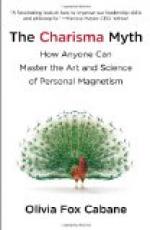Three modes or degrees of abstract representations occur in the progressive exercise of the intellectual faculty; these, combined with the special apprehensions of the individual memory, and with imaginative types, constitute the life of human thought, and are the conditions by which we attain to rational knowledge. While the specific mythical type may take the place of the general type in the logical exercise of thought, and may suffice for an imaginative comprehension of the system of the world, the abstract conception intervenes in the daily necessity for communication between these general mythical types, and serves to cement them together, thus rendering the commerce of ideas among men and in the human mind more easy.
The abstract conceptions which are formed in this way may be divided into three classes—physical, moral, and intellectual. To begin with the first; it is impossible for human speech to point out and define a subject or phenomenon in the series to which it belongs by resemblance, identity, or analogy, unless there is already in the mind a conception which includes the general qualities, or quality proper to the series of similar phenomena; this is essentially an abstract type, but it primarily assumes a concrete form. I cannot say that anything is white or heavy, until by repetitions of the same sensation I have been able to combine in a single conception the sensations diffused over an infinite number of objects. The genesis of these conceptions is found in the comparative explicit judgment which depends on the memory for the necessary conditions of its formation.
The typical and abstract idea of white has not merely a nominal value, as it is asserted in some schools of thought, for an empty term could express no idea, whereas this idea is perfectly clear. Neither is it a real thing, but rather an ideal reality, not a pure abstraction of the spirit, extracted, so to speak, from the material substance. The conception of whiteness formed by the comparative judgment is limited by the perception of the concrete, external fact perceived as one special quality among all other qualities in nature, and it is therefore a physiological fact of inward consciousness.
In the abstract idea of white or whiteness we do not only picture to ourselves a quality common to many things, but by this term, and by the idea which corresponds to it, the same sensation is actually present to our inward intuition, or the same quality of the sensation which was previously generated by our external senses in a concrete form. Although, therefore, the idea is generic, the sensation itself is represented to the mind in the form of a concrete perception. It is not concrete in the sense of belonging to a special object or definite form, as it is presented to the outward perception, but only so far as there is actually an inward and physiological sensation of whiteness, which the word recalls to the memory. There can be no mental confusion with the quality of red, or of any colour, when I speak or think of what is white.




